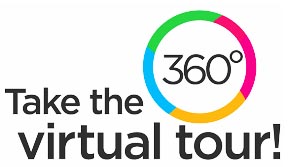The department is equipped with well-established state of art laboratories. The list of the laboratories are given in below:
Biochemistry Laboratory
- Apply basic principles of chemistry to biological systems and molecular biology.
- Correlate molecular structure and interactions present in proteins, nucleic acids, carbohydrates and lipids
- Perform procedure to characterize the biomolecules using microscopy.
- Understand the gross histology, structure and functions of various organs of the human body
- Implement the physiological tests and appreciate the interlinked mechanisms in the maintenance of normal functioning of human body
- Perform basic physiological and pharmacological experiments and to record and interpret the results for its clinical significance.
Pharmaceutical chemistry Laboratory
- Apply safe laboratory practices in the preparation of reagents, handling and storage of chemicals.
- Identify/confirm the unknown organic compounds by melting point determination, pKa, boiling point, Viscosity etc.
- Carry out quality control tests for fine chemicals and bulk drugs.
- Implement the knowledge of chemistry in designing the synthetic scheme of organic compounds.
- Demonstrate feasible synthesis of some important class of drugs using chemical reactions.
- Develop the reaction mechanism and orientation of chemical bonds in the synthesis of major industrial compounds.
Microbiology Laboratory
- Understand the advanced technical information pertaining to laboratory bio-safety and preventive measures from pathogenic microorganism.
- Develop the minimum skills to work on several important techniques using equipment for the study of microorganisms. Microscopically examine living microorganisms.
- Familiar with the types of laboratory equipment and culture media needed to develop and maintain pure cultures.
- Carry out the technique for aseptic removal and transfer of microorganisms for subculturing.
- Determine the cultural characteristics of microorganisms as an aid in identifying and classifying organisms into taxonomic groups.
- Practical use of the compound microscope for visualization of cellular morphology from stained slide preparations.
Molecular Biology and Genetic Engineering Laboratory
- Describe the main principles, methods for preparation and cloning of DNA in various
organisms.
- Express clearly about the gene amplification and methods for analysis of DNA, such as
- hybridization, restriction analysis and gene expressions.
- Express clearly about the analysis of protein expressions.
Physical Pharmaceutics Laboratory
- Characterize and evaluate the properties of powders by suitable methods
- Plan and carryout the determination of interfacial property of liquids. .
- Plan and carryout the determination of viscosity,
- Plan and carryout the physical stability study of suspension and emulsion dosage forms..
- Plan and carryout the, preparation of buffer and to determine the buffer capacity and
- isotonicity of solutions
- Calculate the rate constant and order of reactions
Analytical Methods and Instrumentation Laboratory
- Discuss the principle, theory and instrumentation of UV/Visible spectroscopy; Applications in pharmaceuticals.
- Describe the principle, instrumentation and operation of AAS; Difference between AAS and FES; Applications in pharmaceuticals.
- Illustrate the principle and instrumentation of IR and NMR spectroscopy; Applications in pharmaceuticals.
- Discuss the basic principle, instrumentation and ionization methods of Mass spectroscopy; Applications in pharmaceuticals.
- Describe the principle, instrumentation, solvents and packing materials of CC, TLC and HPLC; Applications in pharmaceuticals.
- Apply the theoretical knowledge of instruments, new analytical methods may be developed and validated for the screening of various pharmaceutical agents.
Physiology and Pharmacology Laboratory
- Acquire knowledge on handling of Laboratory animals.
- Implement the physiological tests and appreciate the interlinked mechanisms in the maintenance of normal functioning of human body
- Perform basic physiological and pharmacological experiments and to record and interpret the results for its clinical significance.
- Demonstrate laboratory procedures used to examine anatomical structures and evaluate physiological functions of each organ system
- Interpret graphs of anatomical and physiological data.
- Apply the methods to evaluate the potency of drugs, toxicity of drugs in animal models.
Medicinal Chemistry Laboratory
- Develop the ability to suggest suitable techniques to synthesis different drug molecules
- Master a variety of synthetic techniques including purification methods and should gain the
- Ability to design a synthetic scheme for a proposed drug molecule.
- Demonstrate how to conduct chemical reactions within medicinal chemistry context and
scientific report.
Bioprocess Engineering Laboratory
- Describe the fundamental concepts of bioprocessing, Understand the difference between
- bioprocesses and chemical processes, Bioprocess design and operation and would be
- able to select the bioreactor
- Demonstrate bioprocesses in a bacterium, fungi or yeast, and their energy metabolism and
- carbon sources through various parameters.
- Evaluate and optimize the nutritional requirements.
Formulation and Dosage Forms Laboratory
- Acquire knowledge to prepare and evaluate various liquid, semi-solid dosage forms
- Acquire knowledge to prepare and evaluate solid dosage forms and parenteral dosage forms
- Experiment and interpret the granule manufacturing process
- Demonstrate the concepts in formulation and evaluation of capsules
- Apply the knowledge to formulate new dosage forms
- Experiment various quality control parameters of pharmaceutical dosage forms
Biopharmaceutics and Pharmacokinetics Laboratory
- Perform dissolution studies for the modified dosage forms.
- Estimate various pharmacokinetic parameters using plasma and urine drug level data.
- Predict the effects of dosage form design and routes of drug administration on drug levels in body.

